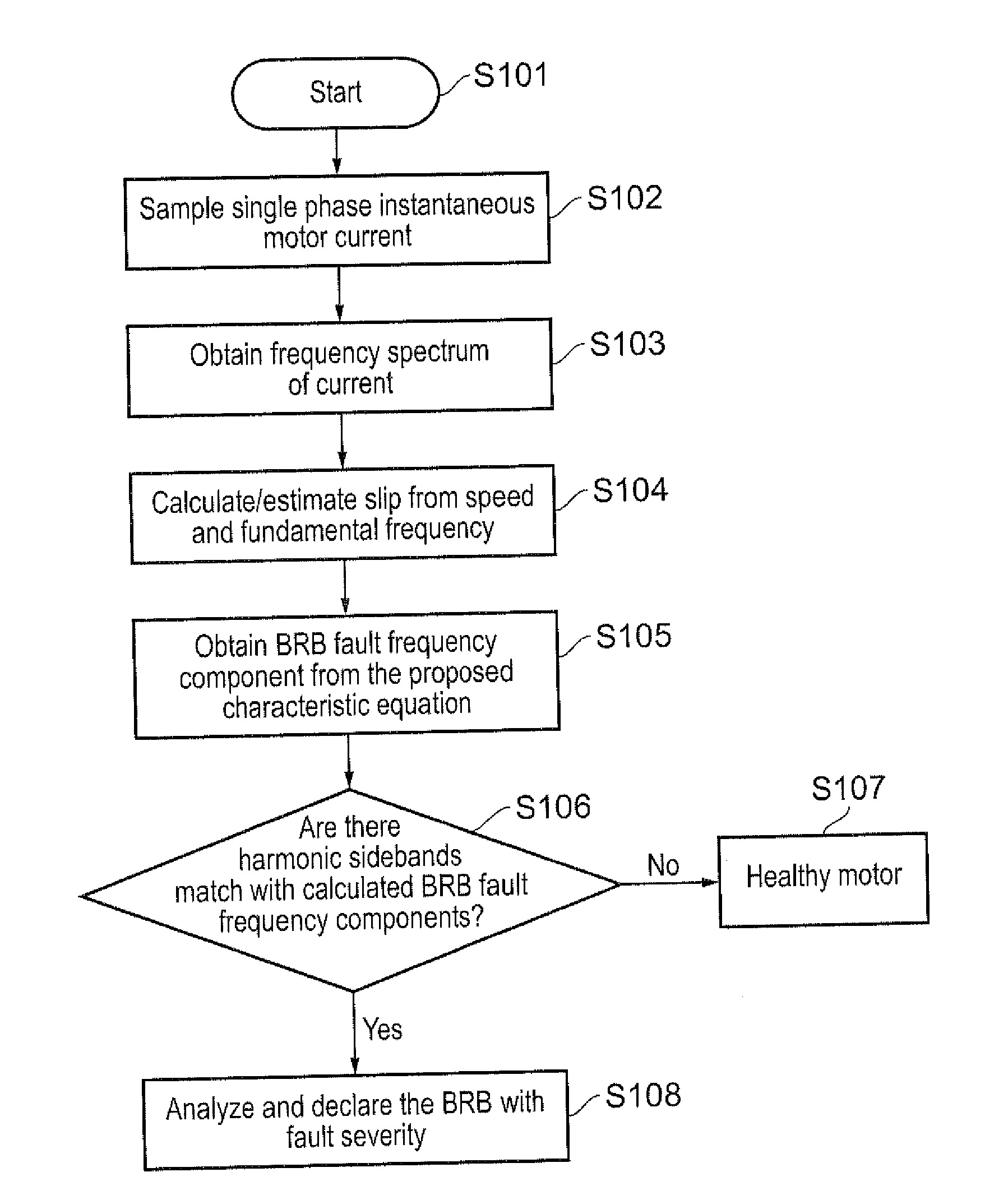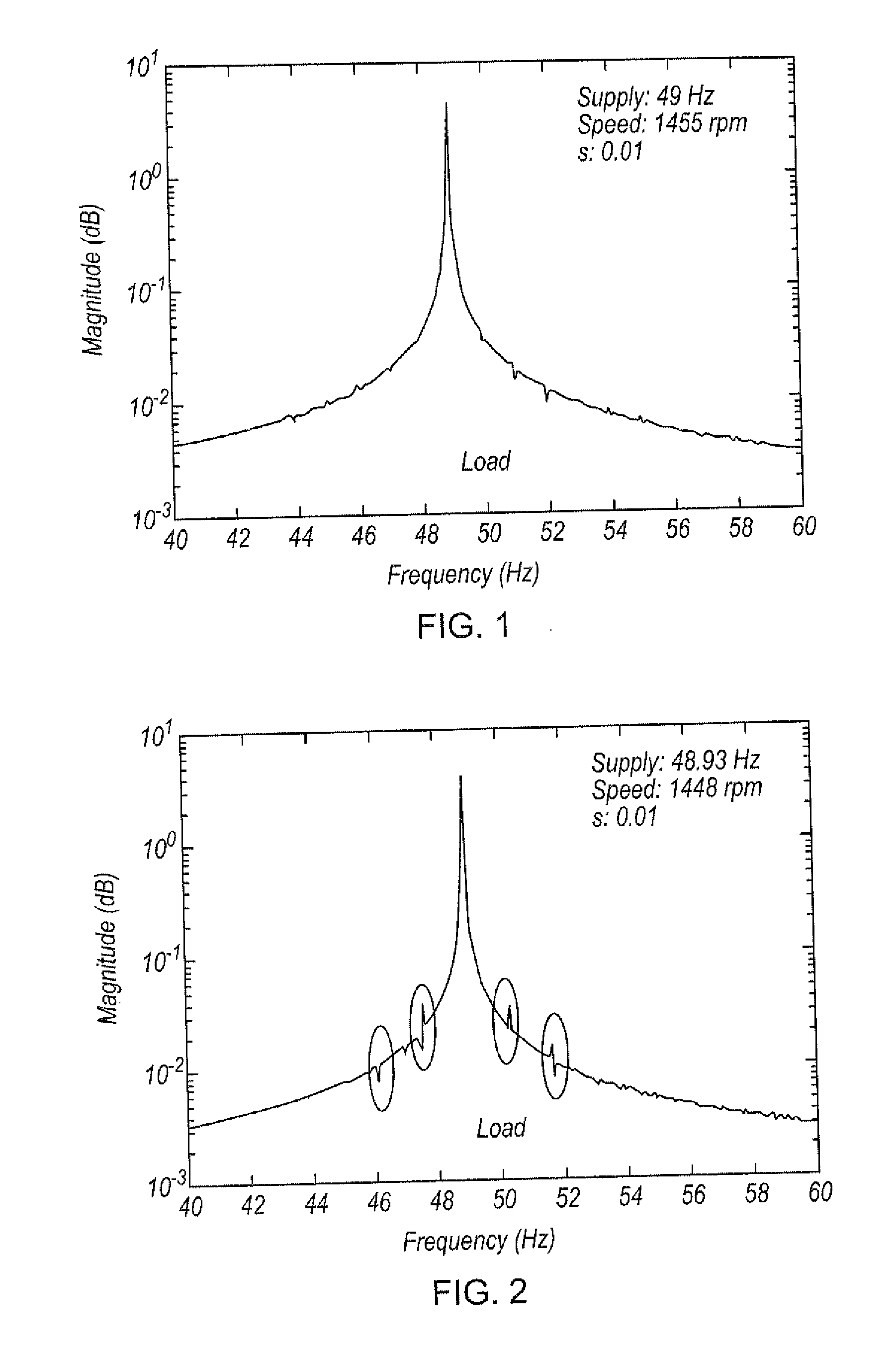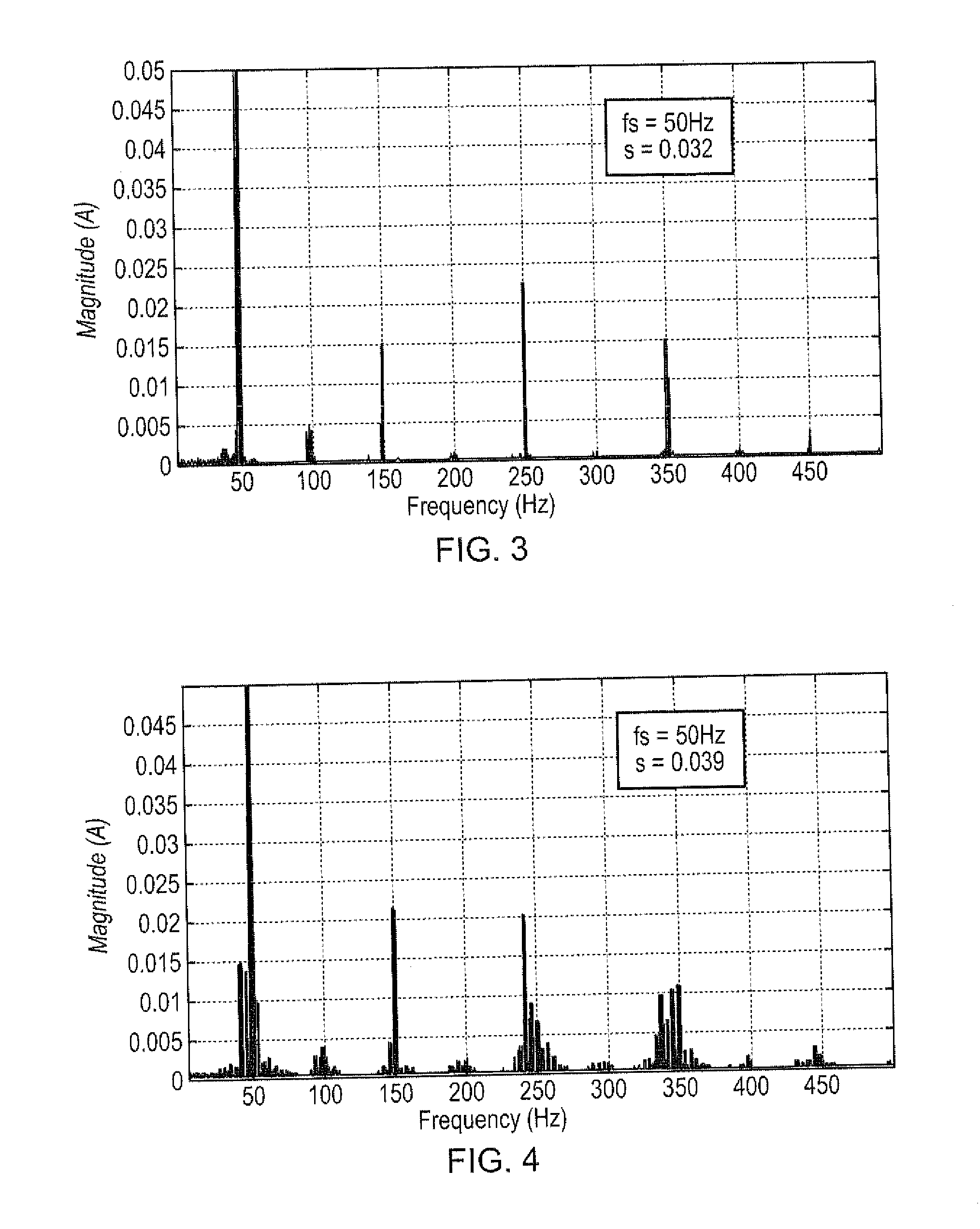Fault detection in induction machines
a fault detection and induction machine technology, applied in the direction of dynamo-electric machine testing, instruments, measurement devices, etc., can solve the problems of excessive vibration, excessive loss of revenue, and permanent damage to the machin
- Summary
- Abstract
- Description
- Claims
- Application Information
AI Technical Summary
Benefits of technology
Problems solved by technology
Method used
Image
Examples
Embodiment Construction
[0087]In an aspect, the present invention provides a new equation to detect faults, e.g. BRB faults, in electrical machines such as induction motors. The new equation identifies the sideband frequencies which are characteristic fault frequency components of a BRB fault. But, unlike the prior art classical equation (equation (1) above) used in existing techniques, the new equation helps to identify the fault frequency components (the sidebands) of harmonics of the fundamental supply frequency, other than the fundamental supply frequency itself.
[0088]The present invention provides several advantages over the prior art, such as reliable fault detection at low frequency resolution of current frequency spectrum, low slip (e.g. low load), and at low fault severity. Furthermore, the present invention is applicable to single phase current measurements (in addition to multi-phase current measurements), which has the added advantage of requiring less computational resource, and means the inve...
PUM
 Login to View More
Login to View More Abstract
Description
Claims
Application Information
 Login to View More
Login to View More - R&D
- Intellectual Property
- Life Sciences
- Materials
- Tech Scout
- Unparalleled Data Quality
- Higher Quality Content
- 60% Fewer Hallucinations
Browse by: Latest US Patents, China's latest patents, Technical Efficacy Thesaurus, Application Domain, Technology Topic, Popular Technical Reports.
© 2025 PatSnap. All rights reserved.Legal|Privacy policy|Modern Slavery Act Transparency Statement|Sitemap|About US| Contact US: help@patsnap.com



